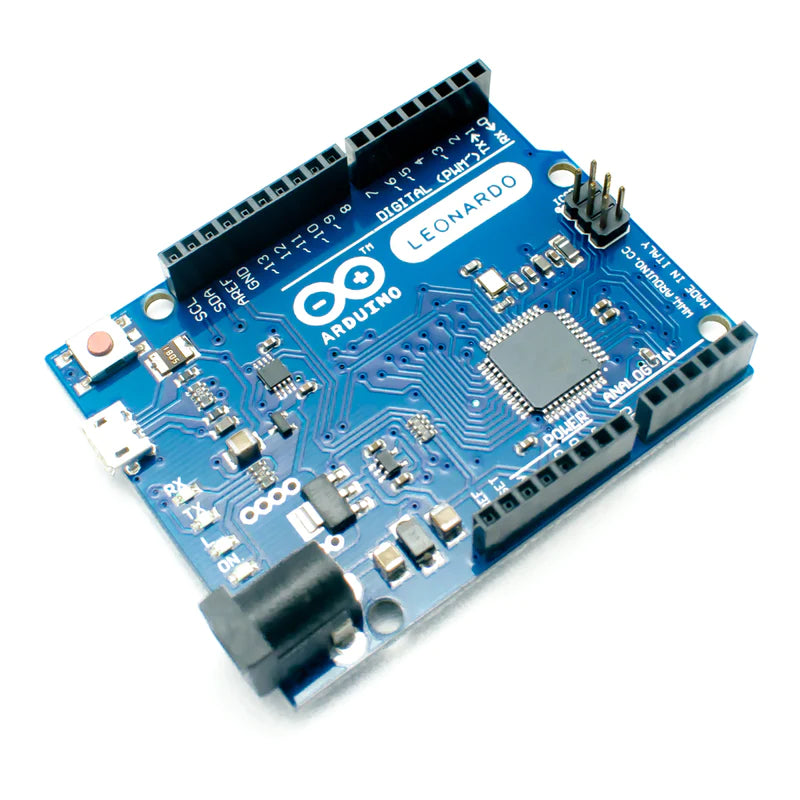

The Arduino Leonardo is a microcontroller board based on the ATmega32U4 SMD chip that is open source. It has a 16 MHz crystal, a USB connection, a power jack, an in-circuit system programming (ICSP) header, and a reset button. It has 20 digital input/output pins (of which 7 can be used as PWM outputs and 12 can be used as analog inputs), a 16 MHz crystal, a USB connection, a power jack, an ICSP header, and a reset button. It comes with everything you'll need to get started with the microcontroller; just plug it into a computer (or an appropriate wall power adapter) through a Micro USB cable, or power it using an AC-to-DC adapter or battery. The user-programmable ATmega32U4 AVR microcontroller on the Leonardo differs from all previous Arduino boards in that it has built-in USB capabilities, eliminating the requirement of a secondary processor. The Leonardo becomes more versatile as a result of this: in addition to offering a virtual (CDC) serial/COM port interface, it may also appear as a mouse and keyboard to a connected computer.
| Microcontroller | ATmega32u4 |
| Operating Voltage | 5V DC |
| Input Voltage | 7-12V DC |
| Digital I/O Pins | 20 |
| PWM Channels | 7 |
| Analog I/O Pins | 12 |
| Clock Speed | 16MHz |
| Flash Memory | 32KB |
| EEPROM | 1KB |
| Size | 68x54x20mm |